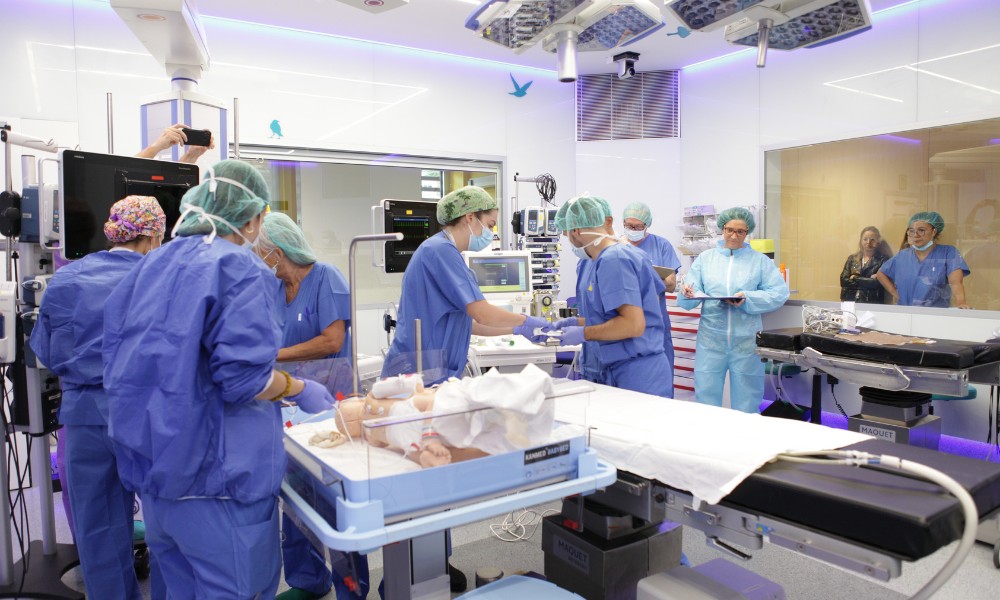SJD Children's Hospital enhances patient safety by introducing SIMTests, an innovative clinical simulation in Europe
A method that anticipates risks and optimize care before the patient is involved.

“Learning from life before it happens” is the principle that guides the Advanced Simulation Unit team at SJD Children's Hospital Barcelona. Following this philosophy, the hospital develops SIMTests, a model created by Boston Children's Hospital, with which SJD is affiliated.
The goal of SIMTests is not simply to train professionals, but to transform the system — using simulation as a method of design and continuous improvement that recreates clinical situations in real hospital settings, involving the care teams themselves. The purpose is to uncover hidden risks, redesign processes, and validate working hypotheses in a safe environment, ensuring that the changes applied to clinical practice are safer, more efficient, and more patient-centered.
More than 1,400 observations and 29 SIMTests with a direct impact on safety and quality of care
Since its launch in 2014, the Clinical Simulation Unit at SJD Children’s Hospital Barcelona has carried out 29 SIMTests, 6 of which were dedicated to clinical trials in the design phase. In total, more than 1,400 observations have been generated, applied to a wide range of projects with a direct impact on patient safety and quality of care.
As José María Quintillá, head of the Clinical Simulation Unit, explains: “Things are never exactly as we imagine them. Simulation helps us put theoretical designs to the test in a realistic environment, identify what might fail, and ensure that every improvement translates into greater safety for patients and more confidence for professionals.”
This methodology has been applied in the design of new spaces before construction, the improvement of already operating areas, the optimization of clinical processes, and the evaluation of equipment and medical technologies prior to their implementation. A total of 53 different areas have taken part, with special involvement from nursing, anesthesiology, intensive care, pediatric emergency, and families. This multidisciplinary participation has made it possible to analyze each scenario from multiple perspectives — clinical, technical, and patient experience — to achieve more complete and realistic solutions.
Thanks to these simulations, the hospital has been able to improve the ergonomics of its spaces, streamline care pathways, adjust workloads, and strengthen coordination between teams in highly complex interventions, reducing risks before they impact real patient care.
Un enfoque estructurado que convierte cada simulación en mejoras reales
SIMTests are carried out in six main stages: identifying needs, designing the scenario, preparing the technical and logistical setup, running the simulation, analyzing the results, and assessing the impact. Each exercise combines qualitative and quantitative data — measuring response times, workload, accessibility, patient experience, and risks for professionals. This dual approach helps uncover not only technical improvements, but also issues of coordination, communication, and perceptions of safety. The recommendations feed directly into the design of spaces, the selection of equipment, and the definition of clinical protocols.
This structured method brings professionals into the process from the very beginning, ensuring that each simulation has an immediate, practical impact and that lessons learned quickly translate into better real-world care.
As Quintillá emphasizes, “frontline professionals are the true protagonists of SIMTests. Their perspective and experience turn simulation into a transformative tool, one that strengthens what already works and drives safer, more human-centered care.” Thanks to this involvement, each simulation becomes a catalyst for change that reinforces teamwork and guarantees safer environments for both professionals and patients.







